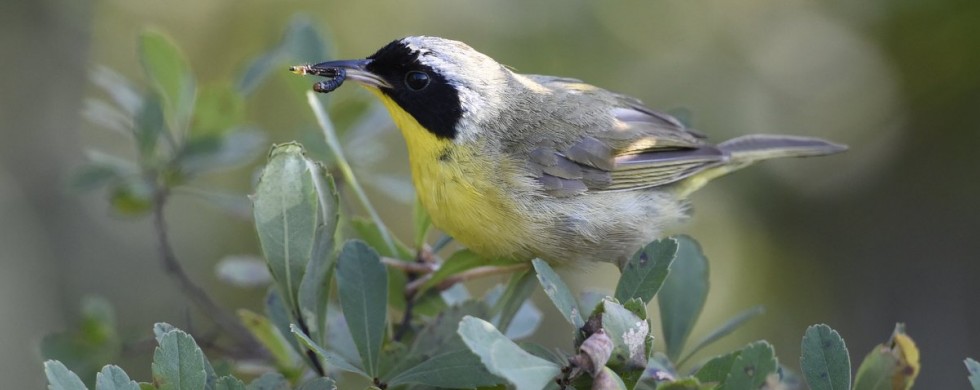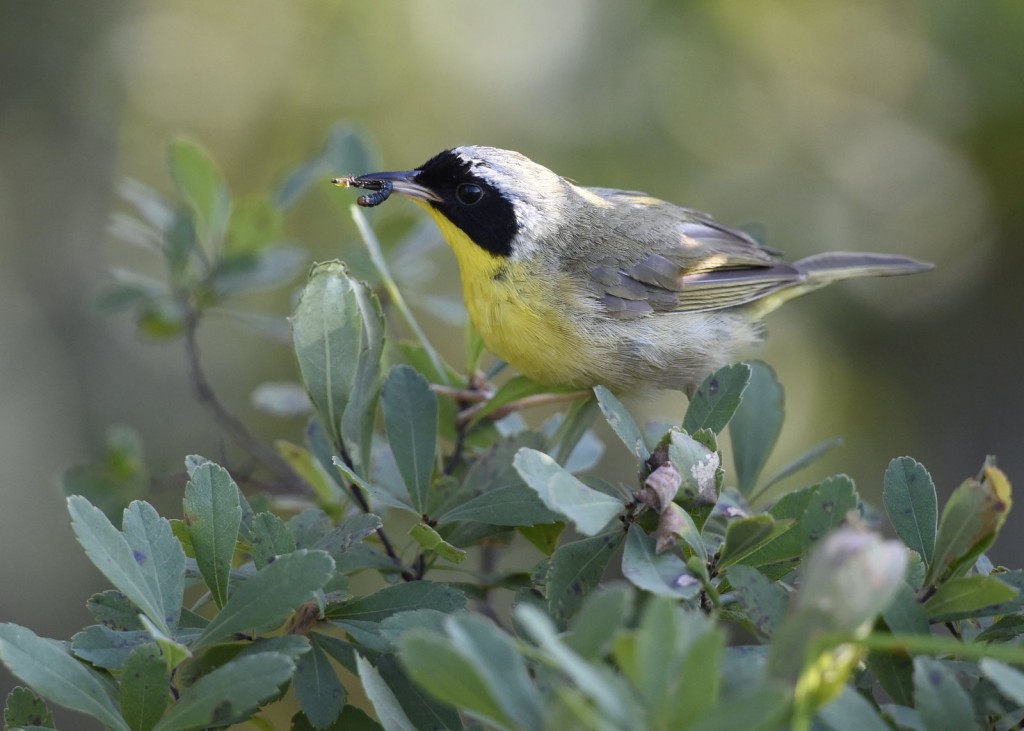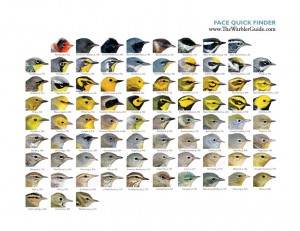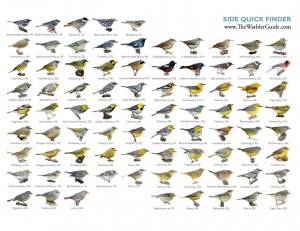
31
2014The Warbler Wave
Shot of the Month – August 2014
If bird watching was like surfing, then in mid-to-late August wise birder dudes and dudettes would start paddling hard to catch the rising crest of the next big wave that is coming. (Click here for the appropriate soundtrack for this posting)
Birding? Surfing? Huh? Let me elaborate on my strained analogy.
In late summer (if you are living in Vermont like me) or early fall if you are living further south, the fall migration of warblers is taking off (so to speak).
What’s a warbler? Well my dear non-ornithologically minded friend, warblers are a group of tiny (smaller than a sparrow), winged jewels of the bird world. In the New World we have about 113 species of warblers; of these 56 species can be found in the United States and Canada. Many of these fellows have striking colors and patterns. The visual treat is often fleeting as these guys are insectivores – they are always on the go darting from tree to tree, from leaf to limb, in search of the next bug to munch on. Trying to photograph these minute, energetic fellows is a recipe for hysteria as they flit hither and thither. By the time you snap the shutter they are gone (I have lots of shots of empty branches if you would like to buy one or ten). At best you tend to catch a glimpse of a wing, or a tail, or other assorted bird bits….
Back to the wave. The warbler diet requires that they stay on the move. There are no insects to feed on in areas that experience winter so warblers spend the cold months in Central or South America (the other 60 or so species of warblers live there year-round). This constant movement results in two glorious waves of warblers each year in the US — first there is the spring migration as the birds move north to their breeding sites; and then again in the fall as the birds head south before the chill sets in. The spring migration is a source of rapture for birders who have been suffering through long, mostly avian-free winter landscapes. The fall migration is also fun as it is like a lottery as you never quite know what migrant might stop by from one day to the next. This wave is bittersweet however as it is also a signal of the exodus of wildlife from the area for months to come.
Already by mid-August, we started to see the trees in our backyard come alive with shaking branches and flashes of color as warblers began to arrive. A bird may stick around a day or two but then they continue on their way. This wave will hit its peak in September and then the action will quickly fade away into October.
In the above photo, we have a Common Yellowthroat (CYT), the masked bandito of the warbler world. The CYT was one of the first warblers cataloged when a specimen in Maryland was recorded in 1766. I photographed this fellow in Baxter State Park in Maine. I made dozens and dozens of attempts to capture this guy before he finally sat in one spot long enough to get this image. While still numerous, the CYT population has been dropping by 1% per year since 1966 – so the population has declined 33% during this relatively short timeline (source). This trend is sadly, generally true for many songbirds across the US.
Here is a nice video of a CYT and a chance to hear his song:
Below is a quick guide on the breadth of warblers you might see. If you are really interested in learning more check out The Warbler Guide. It is an insanely detailed book on warblers and probably the definitive guide on identifying which bird is which.
Surfs Up! The crest is peaking as I write this. Grab your board, uh binoculars, and get out there and ride this colorful wave while you can.
Nikon D4S Nikon 600mm f/4; 1.4x TC (850 mm), f/5.6, 1/1000 s, ISO 2800




Shareful
Very nice capture with information…
Patricia Mountjoy
Listening to the warbler I thought how beautiful the woods must have sounded before all the noise of the “modern” soundscape. Thank you for a bautiful moment in my day. Princess is snoozing in my big chair.